
Zaragoza: The Heartbeat of Aragon
Experience Zaragoza, a city where history meets modernity, offering stunning architecture, rich culture, and delicious cuisine in the heart of Spain's Aragon region.
Nestled in the northeast of Spain, Zaragoza is the vibrant capital of the Aragon region. This city, rich in history and culture, offers an inviting blend of ancient landmarks and modern attractions. Zaragoza sits by the Ebro River, providing picturesque views and a serene ambiance for its visitors. One of the city's most iconic sights is the Basilica of Our Lady of the Pillar. This majestic church, with its stunning baroque architecture, is a symbol of Zaragoza and a major pilgrimage site. Nearby, the Aljafería Palace stands as a testament to the city's Islamic heritage. This 11th-century fortress has beautifully preserved interiors that transport you back in time. Zaragoza is also home to a variety of museums and galleries. The Goya Museum showcases works by Francisco de Goya, one of Spain's most renowned artists, who was born in the nearby town of Fuendetodos. The city also offers a lively food scene, with tapas bars and traditional restaurants serving up delicious local dishes. Don't miss the chance to try 'ternasco', a succulent roast lamb dish that is a regional specialty. The city is perfect for leisurely strolls, with many pedestrian-friendly streets and plazas where you can soak in the local atmosphere. El Tubo is a must-visit area, famous for its narrow streets lined with bustling tapas bars. For a touch of nature, head to the Parque Grande José Antonio Labordeta, a large park perfect for a relaxing afternoon. Whether you're a history buff, a foodie, or simply looking for a charming getaway, Zaragoza has something to offer. Its blend of historical grandeur and modern charm makes it a delightful destination for any traveler.
Local tips in Zaragoza
- Visit the Basilica of Our Lady of the Pillar at night to see it beautifully lit up.
- Try visiting in October during the Fiestas del Pilar for vibrant local celebrations.
- Purchase a Zaragoza Card for discounts on attractions and public transport.
- Wear comfortable shoes for walking, as many attractions are best explored on foot.
- Learn a few basic Spanish phrases to enhance your experience and interact with locals.
Neighbourhoods in Zaragoza
Zaragoza: The Heartbeat of Aragon
Nestled in the northeast of Spain, Zaragoza is the vibrant capital of the Aragon region. This city, rich in history and culture, offers an inviting blend of ancient landmarks and modern attractions. Zaragoza sits by the Ebro River, providing picturesque views and a serene ambiance for its visitors. One of the city's most iconic sights is the Basilica of Our Lady of the Pillar. This majestic church, with its stunning baroque architecture, is a symbol of Zaragoza and a major pilgrimage site. Nearby, the Aljafería Palace stands as a testament to the city's Islamic heritage. This 11th-century fortress has beautifully preserved interiors that transport you back in time. Zaragoza is also home to a variety of museums and galleries. The Goya Museum showcases works by Francisco de Goya, one of Spain's most renowned artists, who was born in the nearby town of Fuendetodos. The city also offers a lively food scene, with tapas bars and traditional restaurants serving up delicious local dishes. Don't miss the chance to try 'ternasco', a succulent roast lamb dish that is a regional specialty. The city is perfect for leisurely strolls, with many pedestrian-friendly streets and plazas where you can soak in the local atmosphere. El Tubo is a must-visit area, famous for its narrow streets lined with bustling tapas bars. For a touch of nature, head to the Parque Grande José Antonio Labordeta, a large park perfect for a relaxing afternoon. Whether you're a history buff, a foodie, or simply looking for a charming getaway, Zaragoza has something to offer. Its blend of historical grandeur and modern charm makes it a delightful destination for any traveler.
When is the best time to go to Zaragoza?
Iconic landmarks you can’t miss
Cathedral-Basilica of Our Lady of the Pillar
Explore the breathtaking Cathedral-Basilica of Our Lady of the Pillar, an architectural gem and spiritual haven in Zaragoza, Spain, rich in history and artistry.
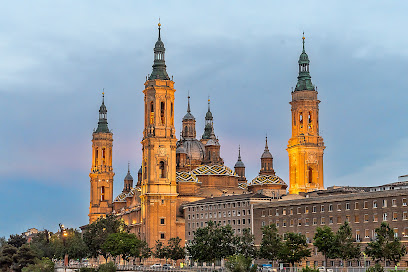
Aljafería Palace
Discover the Aljafería Palace, a stunning Moorish castle in Zaragoza, rich in history and architectural beauty, perfect for every curious traveler.

Parque Grande José Antonio Labordeta
Discover the tranquility of Parque Grande José Antonio Labordeta, a stunning city park in Zaragoza filled with lush gardens, historical monuments, and serene walking paths.

Plaza del Pilar
Discover the vibrant culture and stunning architecture of Plaza del Pilar, Zaragoza's iconic square and a must-visit destination for every traveler.

Stone Bridge Zaragoza
Discover the beauty and history of the Stone Bridge in Zaragoza, a stunning architectural gem with breathtaking views of the Ebro River and Basilica del Pilar.

Puerta del Carmen
Explore Puerta del Carmen, a stunning historical landmark in Zaragoza, where architecture and culture converge to create unforgettable experiences.

Aquarium River of Zaragoza
Explore the captivating underwater world at the Aquarium River of Zaragoza, featuring diverse marine life and engaging interactive exhibits for all ages.
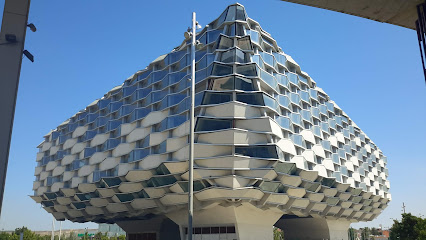
Plaza de los Sitios, Zaragoza
Discover the rich history and vibrant atmosphere of Plaza de los Sitios in Zaragoza, a historical landmark steeped in cultural significance.
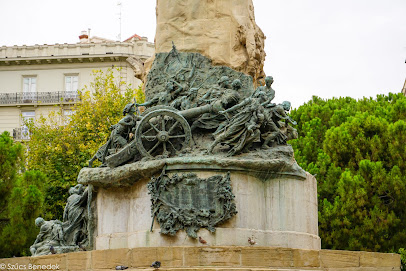
Cathedral of the Savior of Zaragoza
Explore the architectural marvel of the Cathedral of the Savior, a stunning fusion of styles in the heart of Zaragoza's historic Old Town.

Museo del Teatro de Caesaraugusta
Discover the rich Roman heritage of Zaragoza at the Museo del Teatro de Caesaraugusta, where history comes to life through ancient ruins and captivating exhibitions.

Goya Museum
Discover the artistry of Francisco Goya at Zaragoza's premier museum, showcasing his masterpieces and contemporary exhibitions in a historic setting.

Murallas Romanas de Zaragoza
Discover the Murallas Romanas de Zaragoza, an ancient Roman landmark showcasing the rich history and culture of this vibrant Spanish city.

Fire and Fireforce Museum
Uncover the heroic history of firefighting at Zaragoza's Fire and Fireforce Museum, a unique experience showcasing bravery, technology, and safety.

Plaza San Felipe
Explore the historical charm of Plaza San Felipe in Zaragoza, where stunning architecture meets vibrant culture in the heart of the Old Town.

Fundación Ibercaja Patio de la Infanta
Explore the rich cultural offerings at Fundación Ibercaja Patio de la Infanta, a historic center of art and community in Zaragoza, Spain.

Unmissable attractions to see
Cathedral-Basilica of Our Lady of the Pillar
Explore the Cathedral-Basilica of Our Lady of the Pillar, a breathtaking Baroque masterpiece in Zaragoza, rich in history and spiritual significance.

Aljafería Palace
Discover the exquisite beauty and rich history of Aljafería Palace, a UNESCO World Heritage site, in the heart of Zaragoza, Spain.

Parque Grande José Antonio Labordeta
Explore the beauty of Parque Grande José Antonio Labordeta, a lush city park in Zaragoza, perfect for relaxation, recreation, and cultural experiences.
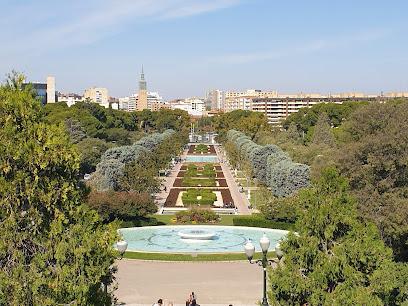
Parque Grande José Antonio Labordeta
Explore the lush landscapes and cultural gems of Parque Grande José Antonio Labordeta, Zaragoza's premier urban park for relaxation and recreation.

Mercado Central de Zaragoza
Explore the Mercado Central de Zaragoza, a culinary haven in the heart of Zaragoza offering fresh produce, local delicacies, and a vibrant atmosphere.

Aquarium River of Zaragoza
Explore the vibrant underwater world at the Aquarium River of Zaragoza, a family-friendly attraction showcasing the beauty of aquatic life.

Puerta del Carmen
Discover the majestic Puerta del Carmen, a historical gateway that embodies the rich cultural heritage of Zaragoza, Spain.

Zaragoza Amusement Park
Unleash your inner child at Zaragoza Amusement Park, where thrilling rides and family-friendly attractions promise a day full of fun and adventure.

Cathedral of the Savior of Zaragoza
Explore the magnificent Cathedral of the Savior in Zaragoza, a stunning Baroque masterpiece filled with rich history and breathtaking artistry.

Parque del Agua Luis Buñuel
Explore the enchanting Parque del Agua Luis Buñuel in Zaragoza, where lush landscapes, serene waters, and vibrant recreational activities await your discovery.

Goya Museum
Explore the Goya Museum in Zaragoza, a cultural gem showcasing the masterpieces of Francisco Goya in a stunning architectural setting.

Museo del Teatro de Caesaraugusta
Explore the rich Roman heritage at Museo del Teatro de Caesaraugusta, a remarkable archaeological museum in the heart of Zaragoza's Old Town.

Parque Macanaz
Explore the tranquil beauty of Parque Macanaz in Zaragoza, a perfect park retreat along the Ebro River, ideal for relaxation and nature lovers.
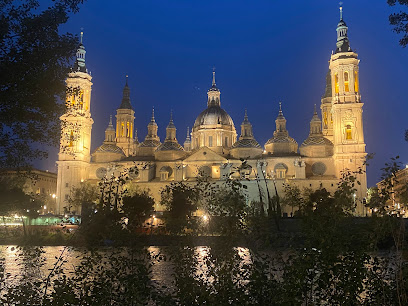
Murallas Romanas de Zaragoza
Explore the majestic Murallas Romanas de Zaragoza, an iconic historical landmark showcasing the grandeur of ancient Roman architecture in the heart of Spain.

Plaza de Toros de la Misericordia
Discover the cultural heart of Zaragoza at Plaza de Toros de la Misericordia, an iconic bullring where tradition meets history.

Essential places to dine
Restaurante El Fuelle
Experience authentic Spanish cuisine at Restaurante El Fuelle in Zaragoza's charming Old Town.

LaBuganvilla
Experience authentic Mediterranean flavors at LaBuganvilla in Zaragoza's charming Old Town - perfect for food lovers seeking local culinary treasures.

Nómada Street Food
Discover Zaragoza's vibrant street food scene at Nómada Street Food – where local flavors meet culinary creativity.

LA LOBERA DE MARTIN
Experience authentic Spanish cuisine at La Lobera de Martin in Zaragoza's historic Old Town - where tradition meets taste.

La Republicana
Experience authentic Spanish tapas and vibrant culture at La Republicana in Zaragoza's charming Old Town.
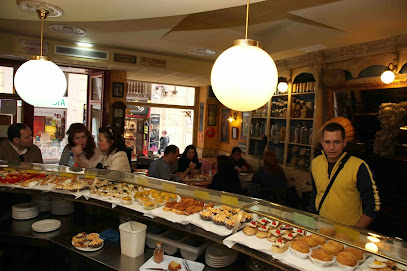
Bula Tapas
Experience authentic Spanish cuisine at Bula Tapas in Zaragoza - where every bite tells a story.

Meli Del Tubo
Discover Meli Del Tubo: A top-rated tapas bar in Zaragoza offering delicious Spanish flavors in a vibrant atmosphere.
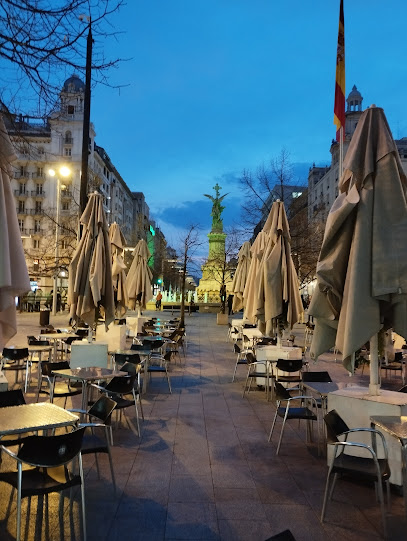
Baobab Restaurant
Discover Baobab Restaurant: A Vegetarian Haven in Zaragoza Offering Innovative Vegan Dishes Crafted from Fresh Local Ingredients.

Bar Mr. Dumbo
Experience the rich flavors of Mediterranean and Arab cuisine at Bar Mr. Dumbo in Zaragoza – a true culinary haven for food lovers.

La Miguería
Discover La Miguería in Zaragoza - where authentic Mediterranean flavors meet warm hospitality in the heart of Old Town.

La Flor de Lis
Discover the fusion flavors at La Flor de Lis in Zaragoza’s Old Town—a family-friendly restaurant offering delicious meat dishes and vibrant bar options.

Taberna 1941 A Pulpería
Discover the essence of Galicia at Taberna 1941 in Zaragoza - where authentic flavors meet warm hospitality.
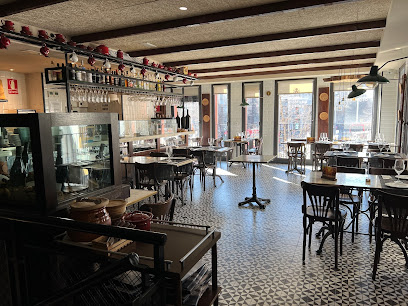
Bokoto Zaragoza
Experience exquisite Japanese cuisine at Bokoto Zaragoza – where tradition meets innovation in every delicious bite.

El Balcón del Tubo
Experience the authentic flavors of Zaragoza at El Balcón del Tubo, where traditional tapas meet a warm and inviting atmosphere.
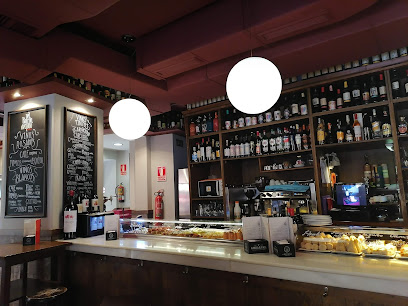
Restaurante Nola Gras
Experience exquisite Mediterranean and Spanish cuisine at Restaurante Nola Gras in Zaragoza – a true culinary delight for every food lover.

Markets, malls and hidden boutiques
Puerto Venecia
Experience the best of shopping, dining, and entertainment at Puerto Venecia, Zaragoza's ultimate shopping paradise.

Cathedral-Basilica of Our Lady of the Pillar
Explore the stunning Cathedral-Basilica of Our Lady of the Pillar, a Baroque masterpiece and cultural gem in Zaragoza, Spain.

Plaza del Pilar
Explore the breathtaking Plaza del Pilar, the cultural heart of Zaragoza, featuring stunning architecture, vibrant entertainment, and rich history.

Mercado Central de Zaragoza
Experience the heart of Zaragoza at Mercado Central, a vibrant market filled with fresh produce, local delicacies, and artisanal crafts.

Centro Comercial Augusta
Discover the vibrant shopping experience at Centro Comercial Augusta in Zaragoza, featuring diverse stores, dining options, and family-friendly amenities.

La Torre Outlet Zaragoza
Discover unbeatable discounts and a vibrant shopping experience at La Torre Outlet Zaragoza, the premier outlet mall in Spain.

Centro Independencia El Caracol
Discover Centro Independencia El Caracol, Zaragoza's vibrant shopping mall with diverse stores and dining options in the heart of the historic Old Town.

ALE-HOP
Discover ALE-HOP in Zaragoza's Old Town, a vibrant gift shop offering unique fashion accessories, home goods, and trendy youth clothing.

Flying Tiger
Discover a vibrant gift shop in Zaragoza's Old Town, offering quirky gifts, DIY supplies, and home goods for every occasion.

Decathlon City Zaragoza
Explore Decathlon City Zaragoza for all your sporting goods needs, from bicycles to outdoor gear, right in the heart of Zaragoza.

Boutique Nespresso Joaquín Costa
Experience the ultimate coffee indulgence at Boutique Nespresso Joaquín Costa in Zaragoza's historic Old Town, where quality meets sophistication.

The Shuave Shop
Explore The Shuave Shop in Zaragoza's Casco Antiguo for unique, modern gifts and souvenirs that capture the city's creative spirit.

Taste of America
Discover the essence of American cuisine at Taste of America, a gourmet grocery and gift shop in Zaragoza, offering a unique culinary experience.
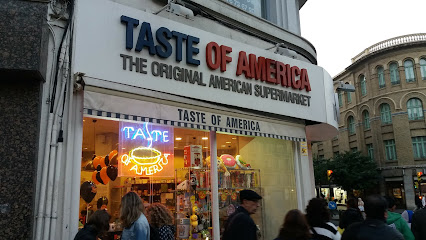
Kalinka ukranian Alimentacion
Discover authentic Ukrainian flavors at Kalinka Ukrainian Alimentacion in Zaragoza, where every bite tells a story of tradition and culture.

Serendipia Zaragoza
Explore Serendipia Zaragoza for unique clothing and accessories that capture the vibrant spirit of Zaragoza's fashion scene.

Essential bars & hidden hideouts
Bar Mr. Dumbo
Savor authentic Arabic flavors at Bar Mr. Dumbo in Zaragoza, where Mediterranean cuisine meets a cozy atmosphere.

Bar El Circo
Experience the lively ambiance of Bar El Circo, a must-visit bar in Zaragoza's Old Town, offering delicious tapas and local drinks.

Bodegas Almau
Experience the authentic flavors of Zaragoza at Bodegas Almau, where tradition meets taste in a charming Old Town bar.

Café Nolasco
Discover Café Nolasco, a grill and cafeteria experience in Zaragoza's Old Town, blending tradition with a modern twist for an unforgettable meal.
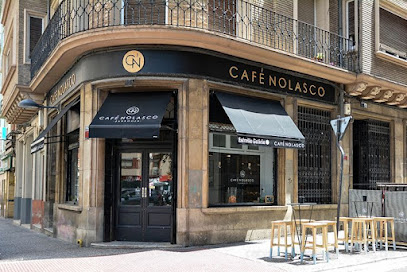
Bull McCabe's Irish Bar
Bull McCabe's Irish Bar: Your Gateway to Authentic Irish Cuisine and Culture in the Heart of Zaragoza's Old Town.

Umalas Bar
Experience the vibrant cocktail culture at Umalas Bar in Zaragoza's charming Old Town, where every sip tells a story.

Gran Café Zaragozano
Experience the vibrant blend of coffee culture and nightlife at Gran Café Zaragozano, a must-visit spot in Zaragoza's historic Casco Antiguo district.

Ginger Fizz Bar
Experience the vibrant flavors of Ginger Fizz Bar, where exquisite sushi meets innovative cocktails in the heart of Zaragoza's Old Town.

Bloody
Experience the vibrant nightlife of Zaragoza at Bloody, where creative cocktails meet a lively atmosphere in the heart of the city.

Moonlight Experimental Bar
Experience innovative cocktails and a vibrant atmosphere at Moonlight Experimental Bar in Zaragoza's historic Casco Antiguo district.

Chilimango
Discover the vibrant atmosphere and innovative cocktails at Chilimango, a top cocktail bar in Zaragoza's historic Old Town.

Bar Atrio
Experience the enchanting melodies of live piano music and delightful drinks at Bar Atrio, a vibrant piano bar in Zaragoza.

Old Whiskey
Discover Old Whiskey in Zaragoza, a vibrant pub offering a unique blend of local charm, exquisite beverages, and a lively atmosphere for an unforgettable night out.

La Cucaracha - Zaragoza
Experience the vibrant nightlife of Zaragoza at La Cucaracha, the go-to cocktail bar for locals and tourists alike, known for its creative drinks and warm atmosphere.

El 35 · Gin Club
Discover Zaragoza's hidden gem, El 35 · Gin Club, where exceptional gin and cocktails come together in a vibrant atmosphere for an unforgettable night out.

Local Phrases
-
- HelloHola
[Oh-la] - GoodbyeAdiós
[Ah-dee-ohs] - YesSí
[See] - NoNo
[Noh] - Please/You're welcomePor favor/De nada
[Por fah-vor/De nah-dah] - Thank youGracias
[Grah-thyas] - Excuse me/SorryPerdón/Lo siento
[Pair-dohn/Lo see-en-toh] - How are you?¿Cómo estás?
[Koh-moh eh-stahs] - Fine. And you?Bien. ¿Y tú?
[Byen. Ee too] - Do you speak English?¿Hablas inglés?
[Ah-blahs een-glays] - I don't understandNo entiendo
[Noh en-tee-en-doh]
- HelloHola
-
- I'd like to see the menu, pleaseMe gustaría ver la carta, por favor
[Meh goo-stah-ree-ah vehr lah kar-tah, por fah-vor] - I don't eat meatNo como carne
[Noh koh-moh kahr-neh] - Cheers!¡Salud!
[Sah-lood] - I would like to pay, pleaseMe gustaría pagar, por favor
[Meh goo-stah-ree-ah pah-gar, por fah-vor]
- I'd like to see the menu, pleaseMe gustaría ver la carta, por favor
-
- Help!¡Ayuda!
[Ah-yoo-dah] - Go away!¡Vete!
[Veh-teh] - Call the Police!¡Llama a la policía!
[Yah-mah ah lah po-lee-thee-ah] - Call a doctor!¡Llama a un médico!
[Yah-mah ah oon meh-dee-koh] - I'm lostEstoy perdido/a
[Es-toy pair-dee-doh/pair-dee-dah] - I'm illEstoy enfermo/a
[Es-toy en-fehr-moh/en-fehr-mah]
- Help!¡Ayuda!
-
- I'd like to buy...Me gustaría comprar...
[Meh goo-stah-ree-ah kohm-prar] - I'm just lookingSolo estoy mirando
[So-loh es-toy meer-an-doh] - How much is it?¿Cuánto cuesta?
[Kwan-to kwehs-tah] - That's too expensiveEsto es demasiado caro
[Es-toh es deh-mah-syah-doh kah-roh] - Can you lower the price?¿Puedes rebajar el precio?
[Pweh-des reh-bah-har el pree-syoh]
- I'd like to buy...Me gustaría comprar...
-
- What time is it?¿Qué hora es?
[Keh oh-rah es] - It's one o'clockEs la una
[Es lah oo-nah] - Half past (10)Y media (las diez)
[ee meh-dee-ah (las d'yehs)] - MorningMañana
[Mah-nyah-nah] - AfternoonTarde
[Tahr-deh] - EveningNoche
[Noh-cheh] - YesterdayAyer
[Ah-yehr] - TodayHoy
[Oy] - TomorrowMañana
[Mah-nyah-nah] - 1Uno
[Oo-no] - 2Dos
[Dohs] - 3Tres
[Tres] - 4Cuatro
[Kwah-troh] - 5Cinco
[Theen-koh] - 6Seis
[Says] - 7Siete
[Syeh-teh] - 8Ocho
[Oh-cho] - 9Nueve
[Nweh-veh] - 10Diez
[D'yehs]
- What time is it?¿Qué hora es?
-
- Where's a/the...?¿Dónde está...?
[Dohn-deh es-tah] - What's the address?¿Cuál es la dirección?
[Kwahl es lah dee-rehk-syohn] - Can you show me (on the map)?¿Puedes mostrarme (en el mapa)?
[Pweh-des mohs-trar-meh (en el mah-pah)] - When's the next (bus)?¿Cuándo es el próximo (autobús)?
[Kwan-doh es el proh-ksee-moh (ow-toh-boos)] - A ticket (to ....)Un billete (a ...)
[Oon bee-yeh-teh (ah)]
- Where's a/the...?¿Dónde está...?
History of Zaragoza
-
Zaragoza, originally known as Caesaraugusta, was founded in 14 BC by the Romans. Named after Emperor Augustus, the city became a significant hub in the Roman Empire, boasting impressive infrastructure such as the forum, theatre, and public baths. The remnants of these structures can still be visited today, offering a glimpse into the city's ancient past.
-
Following the fall of the Roman Empire, Zaragoza came under Visigothic control in the 5th century. In 714 AD, the city was conquered by the Moors, becoming part of the Emirate of Córdoba. Under Islamic rule, Zaragoza flourished as a center of learning and culture, with notable advancements in science, philosophy, and the arts.
-
In 1118, Alfonso I of Aragon successfully captured Zaragoza from the Moors, marking a pivotal moment in the Reconquista. The city became the capital of the Kingdom of Aragon, playing a crucial role in the formation of modern Spain. The construction of significant landmarks such as the Basilica of Our Lady of the Pillar began during this period.
-
The 16th century ushered in a Golden Age for Zaragoza, characterized by economic prosperity and cultural richness. The city became a focal point for Renaissance art and architecture. The Lonja de Zaragoza, an exquisite example of Aragonese Renaissance architecture, and numerous palaces and churches were constructed during this period.
-
Zaragoza played a significant role during the War of Spanish Succession (1701-1714), siding with the Habsburg claimant, Charles VI. After the Bourbon victory, Philip V imposed harsh reprisals on the city. Despite this, Zaragoza continued to grow, adapting to the new Bourbon administration and experiencing infrastructural modernization.
-
One of the most dramatic episodes in Zaragoza's history occurred during the Peninsular War (1808-1814). The city endured two brutal sieges by Napoleonic forces in 1808 and 1809. The resilience and heroism of its citizens, particularly figures like Agustina de Aragón, became legendary, symbolizing Spanish resistance against French occupation.
-
The 19th and early 20th centuries saw rapid industrialization and modernization in Zaragoza. The arrival of the railway in the mid-19th century transformed the city's economy, fostering growth in manufacturing and commerce. The Exposición Hispano-Francesa of 1908 marked Zaragoza's emergence as a modern industrial city, celebrating its cultural and technological advancements.
-
During the Spanish Civil War (1936-1939), Zaragoza was a strategic stronghold for Franco's Nationalist forces. The post-war period brought significant challenges, but also saw the city's gradual recovery and development. The latter half of the 20th century witnessed urban expansion, economic diversification, and a resurgence of cultural activities.
-
In 2008, Zaragoza hosted the International Exposition (Expo 2008), focusing on water and sustainable development. This event revitalized the city, leading to the construction of modern infrastructure such as the Zaragoza Expo complex and the iconic Bridge Pavilion. Today, Zaragoza is a vibrant city that seamlessly blends its rich historical heritage with contemporary innovation.
Zaragoza Essentials
-
Zaragoza is well-connected by various modes of transportation. The city has its own airport, Zaragoza Airport (ZAZ), located about 10 kilometers west of the city center. It serves several European destinations, making it convenient for international travelers. Alternatively, you can fly into Madrid or Barcelona and take a high-speed AVE train, which takes about 1.5 hours from Madrid and 1.75 hours from Barcelona. Buses and regional trains also offer connections from various parts of Spain.
-
Getting around Zaragoza is straightforward thanks to its efficient public transportation system. The city has an extensive network of buses and trams operated by TUZSA. You can buy single tickets, but if you plan to use public transport frequently, consider purchasing a multi-ride card. Taxis are readily available and can be hailed on the street or booked via mobile apps. For shorter distances, renting a bike or walking can be an enjoyable way to explore the city's historic center.
-
The official currency in Zaragoza, as in the rest of Spain, is the Euro (EUR). Credit and debit cards are widely accepted in hotels, restaurants, and shops. However, it's a good idea to carry some cash for small purchases, especially in local markets or smaller establishments. ATMs are plentiful throughout the city, and you can withdraw euros using international cards.
-
Zaragoza is generally a safe city for tourists. However, like any urban area, it's important to stay vigilant, particularly in crowded places like markets and public transport where pickpocketing can occur. The neighborhoods of Delicias and San José have higher crime rates, but these are mostly non-violent crimes. Avoid walking alone at night in poorly lit areas and always keep an eye on your belongings.
-
In case of an emergency, dial 112 for immediate assistance. This number connects you to police, medical, and fire services. Zaragoza has several hospitals and medical facilities, including Hospital Universitario Miguel Servet and Hospital Clínico Universitario Lozano Blesa. Pharmacies are widespread and usually open from 9 AM to 9 PM, with some offering 24-hour service. It's advisable to have travel insurance that covers medical emergencies.
-
Fashion: Do dress smartly when dining out or visiting cultural sites. Avoid overly casual clothing in such settings. Religion: Do respect religious customs, especially in churches. Avoid loud behavior and dress modestly. Public Transport: Do give up your seat to elderly passengers and those with disabilities. Don't eat or drink on public transport. Greetings: Do greet people with a friendly 'Hola' or 'Buenos días'. A handshake is common when meeting someone for the first time. Eating & Drinking: Do try local specialties like 'tapas' and 'paella'. Don't rush your meals; dining is a relaxed and social occasion.
-
To experience Zaragoza like a local, visit the Mercado Central de Zaragoza, where you can buy fresh produce and local delicacies. Enjoy a stroll along the Ebro River and take in the views of the Basilica del Pilar. Try to catch a local 'jota' performance, a traditional dance of Aragón. If you're visiting during the Fiestas del Pilar in October, don't miss the parades, concerts, and fireworks.
Trending Landmark in Zaragoza
-
Cathedral-Basilica of Our Lady of the Pillar
-
Aljafería Palace
-
Parque Grande José Antonio Labordeta
-
Plaza del Pilar
-
Stone Bridge Zaragoza
-
Puerta del Carmen
-
Aquarium River of Zaragoza
-
Plaza de los Sitios, Zaragoza
-
Cathedral of the Savior of Zaragoza
-
Museo del Teatro de Caesaraugusta
-
Goya Museum
-
Murallas Romanas de Zaragoza
-
Fire and Fireforce Museum
-
Plaza San Felipe
-
Fundación Ibercaja Patio de la Infanta
Nearby Cities to Zaragoza
-
Things To Do in Huesca
-
Things To Do in Lleida
-
Things To Do in Pamplona
-
Things To Do in Teruel
-
Things To Do in Lourdes
-
Things To Do in Tarragona
-
Things To Do in San Sebastián
-
Things To Do in Andorra la Vella
-
Things To Do in Arinsal
-
Things To Do in La Massana
-
Things To Do in Escaldes-Engordany
-
Things To Do in Ordino
-
Things To Do in Encamp
-
Things To Do in El Serrat
-
Things To Do in Canillo

















